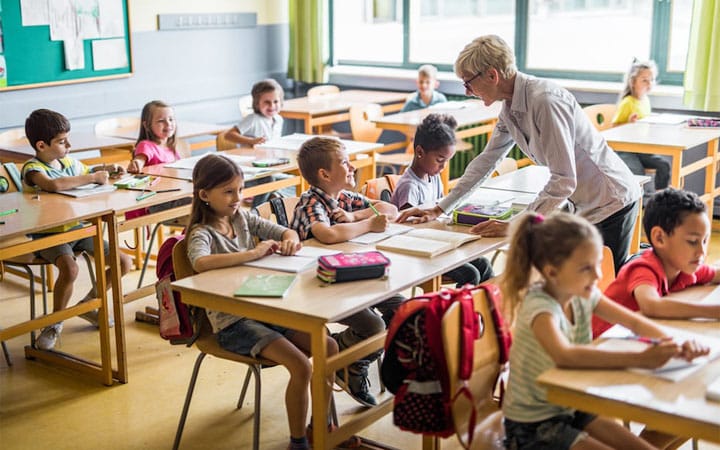Private and Public Schools in UAE: Which One Offers Better Education for Your Child

One of the Middle East’s most vibrant and quickly changing educational systems is found in the United Arab Emirates (UAE). A big choice that parents frequently have to make is whether to send their kids to public or private schools. The decision is influenced by culture, cost, language, and long-term prospects in addition to academics. We’ll go over the main distinctions between private and public schools in UAE in this extensive guide to help you make an informed choice for your child’s future.
Overview of Private and Public School Systems in UAE
The UAE’s goal of fusing cultural preservation with international competitiveness is reflected in its Education system in UAE. Public and private schools both support the UAE’s goal of creating a knowledge-based economy, making education a top national priority. The system now hosts a sizable expat population, creating one of the world’s most diverse learning environments.

A Synopsis of UAE Education History
Education was restricted to “kuttabs,” or traditional Islamic schools, prior to the United Arab Emirates’ creation in 1971. Since then, the nation has advanced significantly, creating a modern, diverse educational system that accepts both Emirati and foreign students.
The Function of the Government in Developing Education
Public schools are run by the UAE Ministry of Education, which guarantees free education for all Emirati nationals. Private schools, on the other hand, provide a variety of international curricula and are governed by regional education authorities such as ADEK (Abu Dhabi) and KHDA (Dubai).
A Comparison of Private and Public School Curricula
The UAE’s balance between tradition and modernity is reflected in the distinct curricula of its public and private schools. Private schools place more of an emphasis on academic diversity and exposure to other countries than do public schools on fostering national identity and cultural values. This distinction enables families to select the kind of education that best fits their children’s future goals, whether those goals are global opportunities or local integration.
An explanation of the UAE National Curriculum
The UAE National Curriculum, which prioritizes Arabic, Islamic Studies and UAE heritage, is the main curriculum followed by public schools in the country. Although it is not the main language of instruction, English is taught as a secondary language.
Private Schools’ International Curricula
The Best international schools in Dubai offer a wide range of programs, including the International Baccalaureate (IB), French, American, Indian (CBSE/ICSE) and British curricula. Families from abroad who are looking for international educational standards that correspond with those in their home countries are drawn to these systems.

Cost and Tuition Fees: How Much Does Education Really Cost?
Depending on whether a student attends a public or private school, the cost of education in the United Arab Emirates varies significantly. One of the most important things affecting parents’ choices is this distinction. Government funding for public education guarantees that Emirati citizens can afford high-quality education. However, private education is a significant financial commitment, especially for foreign families looking for globally renowned curricula and cutting-edge learning settings.
Public Education: Free for Emiratis
Emirati citizens are entitled to free public education in the United Arab Emirates, which typically includes transportation, textbooks, and tuition. The UAE’s dedication to empowering its people via easily accessible education is reflected in this government-funded system. Expatriates, however, have very limited access, typically only through special government sponsorship or exchange programs.
Although the system gives local students a solid foundation, foreign families frequently have to look into private schools to get their kids admitted.
Private Education: High Investment, High Expectations
Depending on the school’s reputation, curriculum and facilities, private school tuition in the United Arab Emirates can range from AED 10,000 to AED 100,000+ annually. Although they frequently charge exorbitant fees, elite schools in places like Dubai and Abu Dhabi provide top-notch instruction, cutting-edge technology and a wide range of extracurricular activities.
Parents see this as a long-term investment in their children’s global future, despite the high costs. In addition to academic brilliance, private schools offer cultural diversity, global exposure and admission to esteemed universities across the globe. These advantages outweigh the substantial financial outlay for a large number of families.
Diversity of Staff and Quality of Instruction
Two of the most notable distinctions between private and public schools in the United Arab Emirates are the caliber of instruction and the diversity of teachers. Although the strategy and results differ, the nation has made large investments to raise educational standards and teacher preparation in both areas. While private schools place a higher priority on global knowledge and cutting-edge teaching methods, public schools concentrate on developing local talent and upholding cultural values. This blending of regional and international viewpoints contributes to the UAE’s well-rounded educational landscape and attracts many international students who also seek information on How to apply for student visa in UAE.

Standards for Teacher Training and Qualifications
Emirati nationals who have received government training frequently teach in public schools. International teachers bring a wealth of experience and a variety of teaching philosophies to their jobs at private schools.
Student-teacher ratios and class size
Compared to public schools with larger student populations, private schools typically maintain smaller class sizes (about 20–25 students per class), guaranteeing more individualized attention.
UAE Education’s Future: Looking Ahead to 2030 and Beyond
Vision 2030, a national strategy aimed at creating a knowledge-based society via innovation, technology and ongoing learning, serves as the roadmap for education in the United Arab Emirates. The government wants an educational system that prepares students for a rapidly changing global economy, encourages creativity and gives them the skills they need for the twenty-first century. To improve teaching standards, incorporate digital learning, and advance inclusivity, the public and private sectors are actively working together. The UAE is gradually becoming a global center for academic innovation and excellence by emphasizing quality, accessibility, and lifelong learning.
Conclusion
Choosing between private and public schools in the UAE depends on a family’s priorities, cultural preferences, and financial capacity. For Emirati families who value free education based on Arabic, Islamic principles and national heritage, public schools are the best option. They provide a solid basis for cultural identity and civic duty.
Conversely, private schools mainly serve foreign families looking for internationally recognized curricula like American, British or IB programs. These institutions prepare students for international universities and careers by offering cutting-edge facilities, smaller class sizes and an international learning environment.
FAQs
1. What is the main difference between private and public schools in the UAE?
The curriculum and funding are where the main differences are found. While private schools charge tuition and offer international curricula, public schools in the United Arab Emirates are free and follow the UAE National Curriculum.
2. Can expatriate children attend public schools in the UAE?
Generally, no. Public schools are reserved for Emirati citizens. However, a few spots may be available to expatriates under special government initiatives or sponsorships.
3. Which curriculum is most popular in private schools in the UAE?
The British Curriculum is the most widely adopted, followed by American, Indian (CBSE) and International Baccalaureate (IB) programs.





